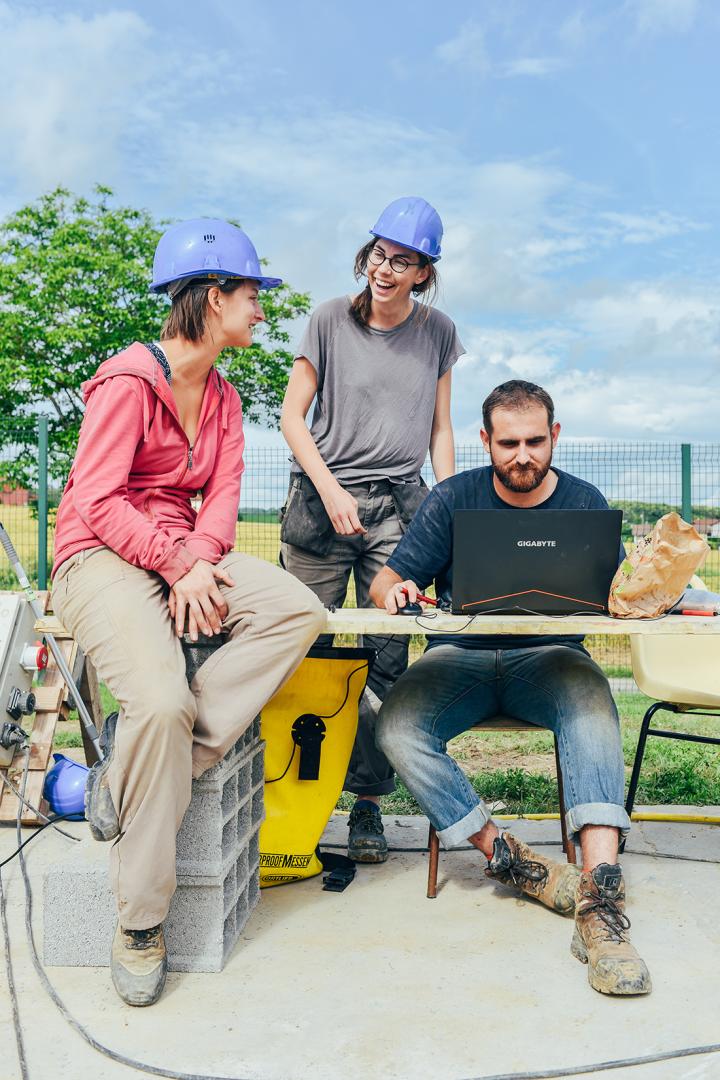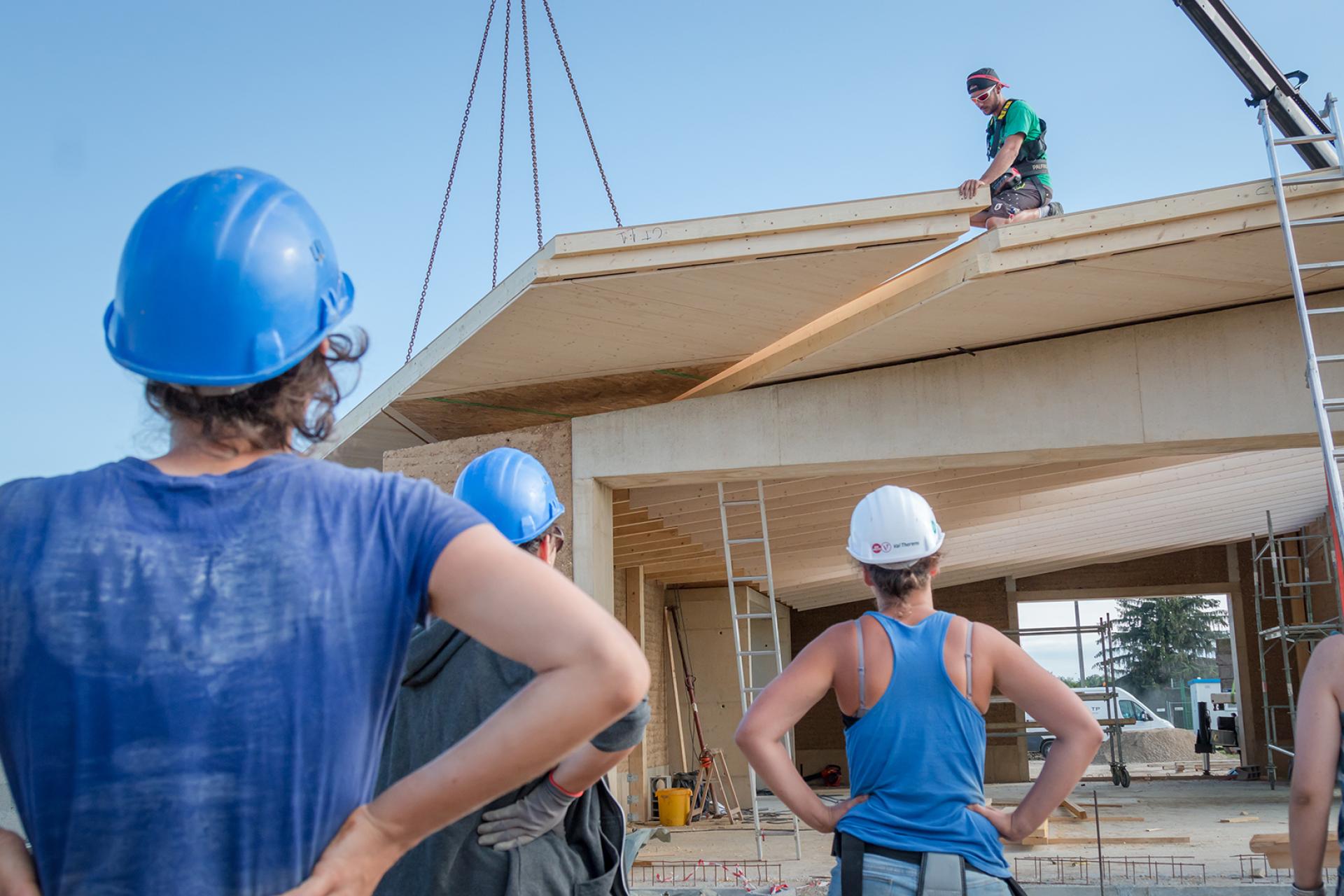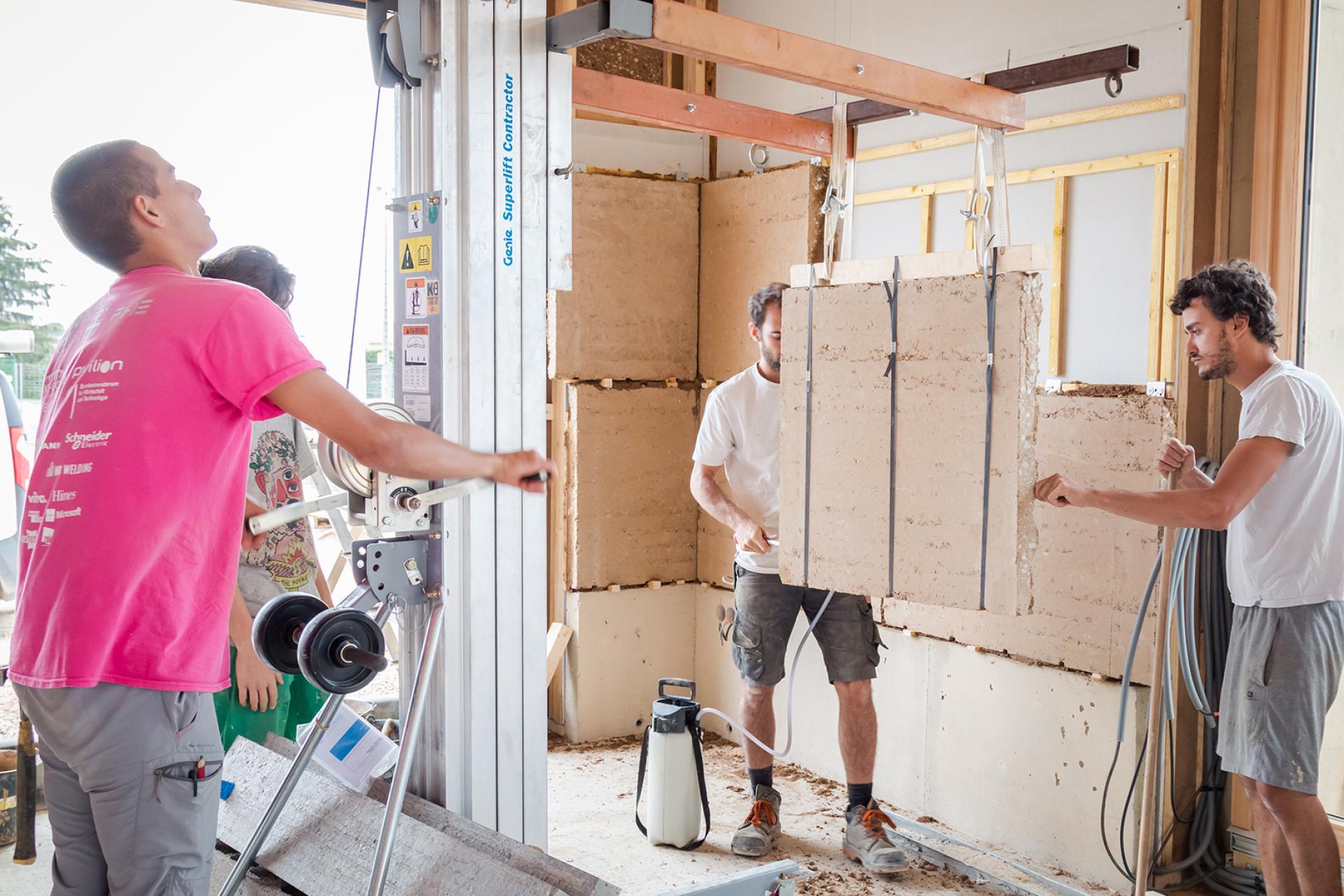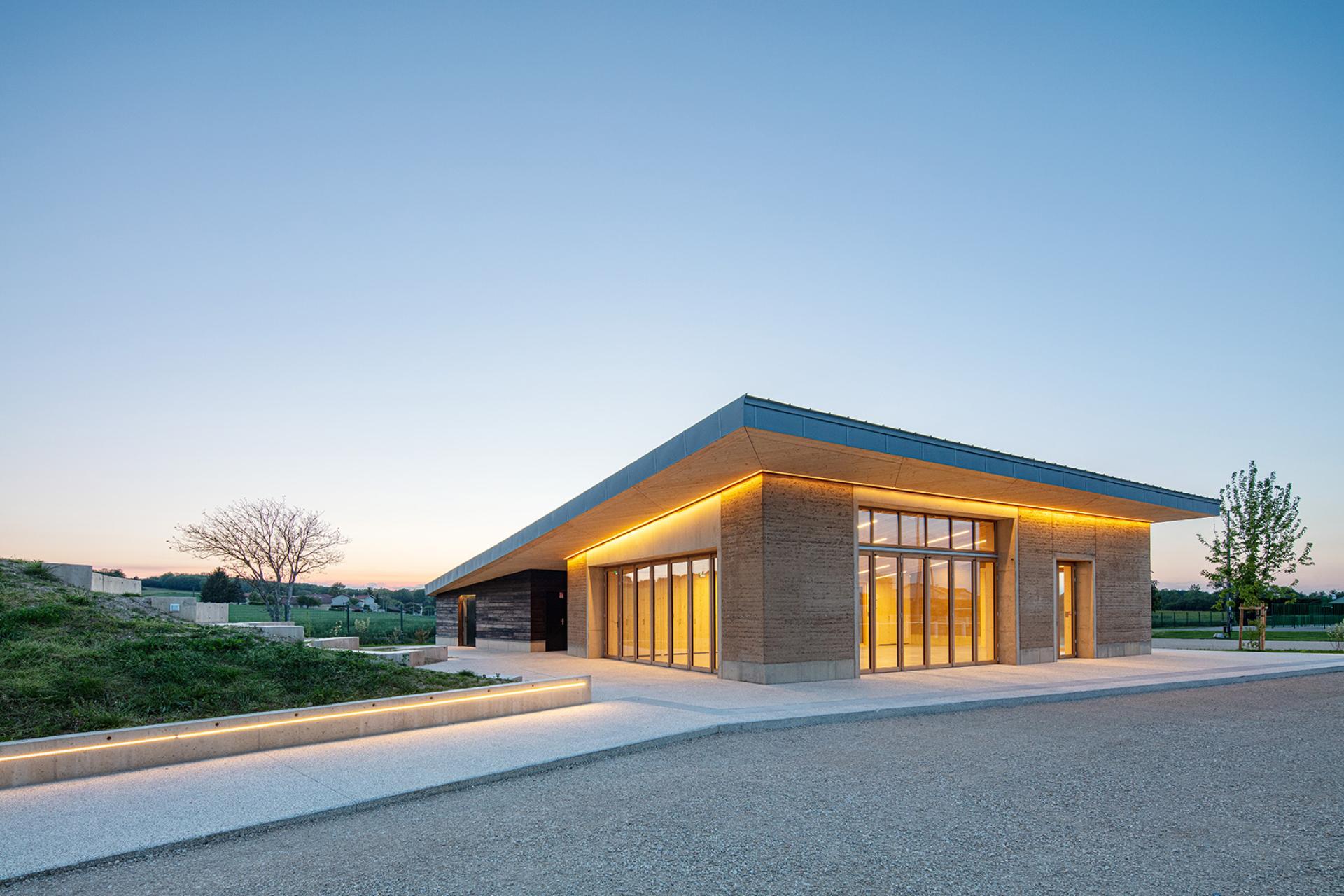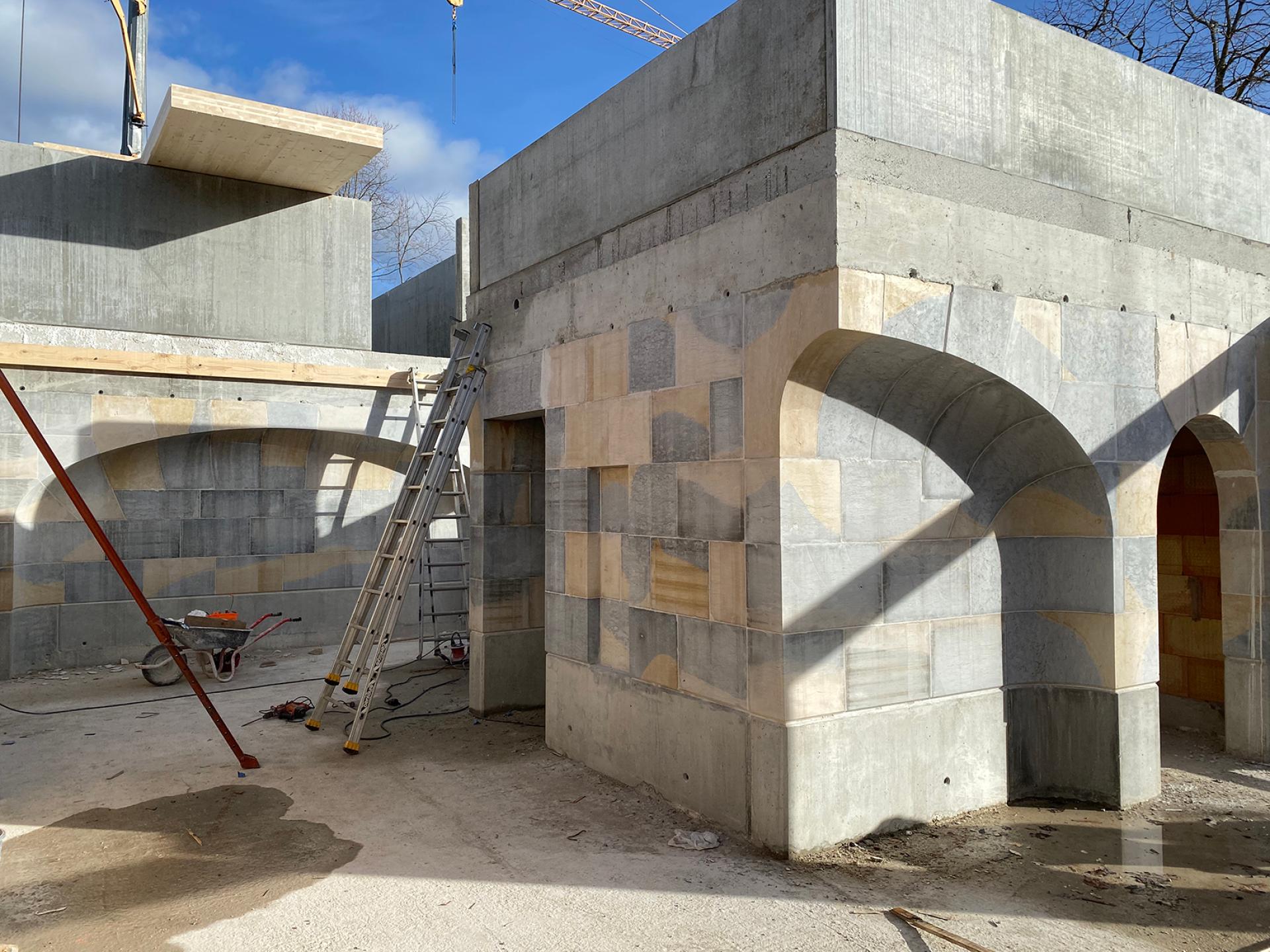designbuildLAB
Basic information
Project Title
Full project title
Category
Project Description
The designbuildLAB of the LabEx AE&CC at the National Architecture School in Grenoble is an experiential learning program focused on the research, development and implementation of ecologically, socially and culturally sustainable architecture. It begins and ends with the premise that the complex challenges of our time will only be solved collaboratively: architects, engineers, educators, students, communities, builders, economists, political leaders all working toward a shared objective.
Project Region
EU Programme or fund
Which funds
Other Funds
The designbuildLAB is a component of a larger research project led by the research team "Architecture, Environment and Building Cultures" at the ENSAG. In that context, each project has indirectly benefited from the funding provided by the EU for the LabEx.
Description of the project
Summary
Each year, a new group of students undertakes a public interest project in collaboration with a partner municipality and the actors of the territory in which it is located. This innovative approach allows architecture students - future architects - to experience the entire project realisation process, from the needs assessment to the construction site, including public consultation, co-creation work with design offices, collaboration with craftsmen and companies, and management and coordination of available resources. This pedagogy aims to reinforce their ability to integrate knowledge and know-how, and to adopt a collaborative entrepreneurial approach in the practice of their future profession.
While the tangible result is always a building, the project is much larger. Architecture is the backdrop for a larger project to engender sustainability at all phases and among all actors in the design, construction and commissioning of buildings . Key facets include public design presentation and input meetings, skills training workshops, public participation events, guided project tours, post occupancy evaluations, published research papers, and international lectures.
Architecture students valorise the work of artisans. Artisans pass on their savoir-faire to future architects. The work of both is demystified and shared with the public. In short, the project demonstrates that sustainability is attainable and scalable.
By giving architecture students and local artisans the opportunity to positively impact the living environment of their fellow citizens, this experience demonstrates their own potential, and that of architecture.
Key objectives for sustainability
The designbuildLAB takes the position that environmental stewardship is neither a commodity nor an aesthetic; rather, it is rather a value which must underpin project conception. This position holds that the environmental problems of our age are problems of disposability and over consumption, which will not be solved by consuming more industrial products, regardless of how “green” those products may claim to be.
In the face of the overwhelming environmental degradation caused by the sourcing and transformation of industrial construction products, there is a renewed appreciation for low carbon, locally sourced, simply prepared and culturally relevant building materials and techniques such as rammed earth, timber, stone and organic fibres.
Despite a plentiful source of raw material, cultural anchorage, and low carbon footprint, the use of bio-sourced and geo-sourced materials in new building projects is severely constrained by contemporary building codes and norms which have been developed around industrial building products, to the detriment of natural building materials and by an ever diminishing pool of craftsman and artisans with the skills to build sustainably.
In response, the designbuildLAB undertakes one construction project each year. The realisation of which arms a generation of future architects with the values and the skills to continue to reshape sustainable construction, retrains and reinvigorates a pool of craftsmen able to build with sustainable materials and techniques and inspires a community with value of building sustainably and collectively.
Key objectives for aesthetics and quality
The designbuildLAB strives to realise first-rate, timeless, architecture because simply low carbon footprint, bio-sourced and geo-sourced materials too often cary a stigma of being relegated to history and in contradiction with innovation and technological advancement. Simply put, when a small rammed-earth community center in a rural French village wins a national concrete industry design prize or is featured in an international journal it reinforces the notion simple materials and methods and circular economies are not nostalgic but rather a key example of a sustainable future.
Key objectives for inclusion
Everyone (mostly) accepts that an ecological revolution in the construction industry is essential to the sustainability of human civilisation. The major obstacle to transformation and adoption that the designbuildLAB has encountered is cost. That is, it costs more to build sustainably. And thus sustainability has become a kind of luxury. The designbuildLAB has thus taken the position that inclusion as a core value is the means to overcome the cost obstacle. By mobilising all actors at every level of the design process to redesign a fully collaborative, inclusive process the designbuildLAB has been able to realise highly innovative, meticulously detailed sustainable projects for the same cost as conventional alternatives.
Results in relation to category
Architecture students have received a hands-on education realising widely published, award winning projects that most professionals would be proud to have realised. Industrial manufacturers have modified their production to offer more sustainable materials. Builders and artisans have expanded their skills to work with more sustainable materials and techniques. Communities are living with and testifying to the values of building more collaboratively and sustainably.
How Citizens benefit
“Now I know why architecture and architects matter.” This simple quote from a community member in a public input meeting for a designbuildLAB project came after a student explained a very beautiful formal gesture in very practical, easily understandable terms. It says everything about how the designbuildLAB stands as an ambassador for sustainable architecture. The clearest measure of success has been that after a long collaborative process the citizens of the communities in which we have worked have taken ownership of the narrative of their respective projects. The citizens themselves become ambassadors for sustainable architecture.
Innovative character
Design Build is now internationally ubiquitous in architectural education but the designbuildLAB is a uniquely European approach to designbuild Education :
Beyond the story of the architectural project, there also exists the story of context specific reshaping of an approach to designbuild education. The French are (in)famous for their near paralysingly complex bureaucracy. And while French architecture schools have developed a rich history of experimenting with full scale mock-ups and prototypes, real-world public-interest student designbuild projects have been stifled by complex regulation and contradictory legal interpretations. Breaking this jam required not only the political will to recast the legislative context, but also the academic will to recast the pedagogical context. Driven by this challenge, designbuildLAB represents the first draft in the articulation of a designbuild pedagogy that favours:
-locally sourced natural materials over discounted, donated or salvaged industrial products
-vernacular form over global icons
-time-tested detailing over experimentation
-mentorship over doing-it-yourself
-professional-led student exchanges over student-led professional exchanges
-assurability and insurability over of protection from liability
and
-success over failure as the best teacher

